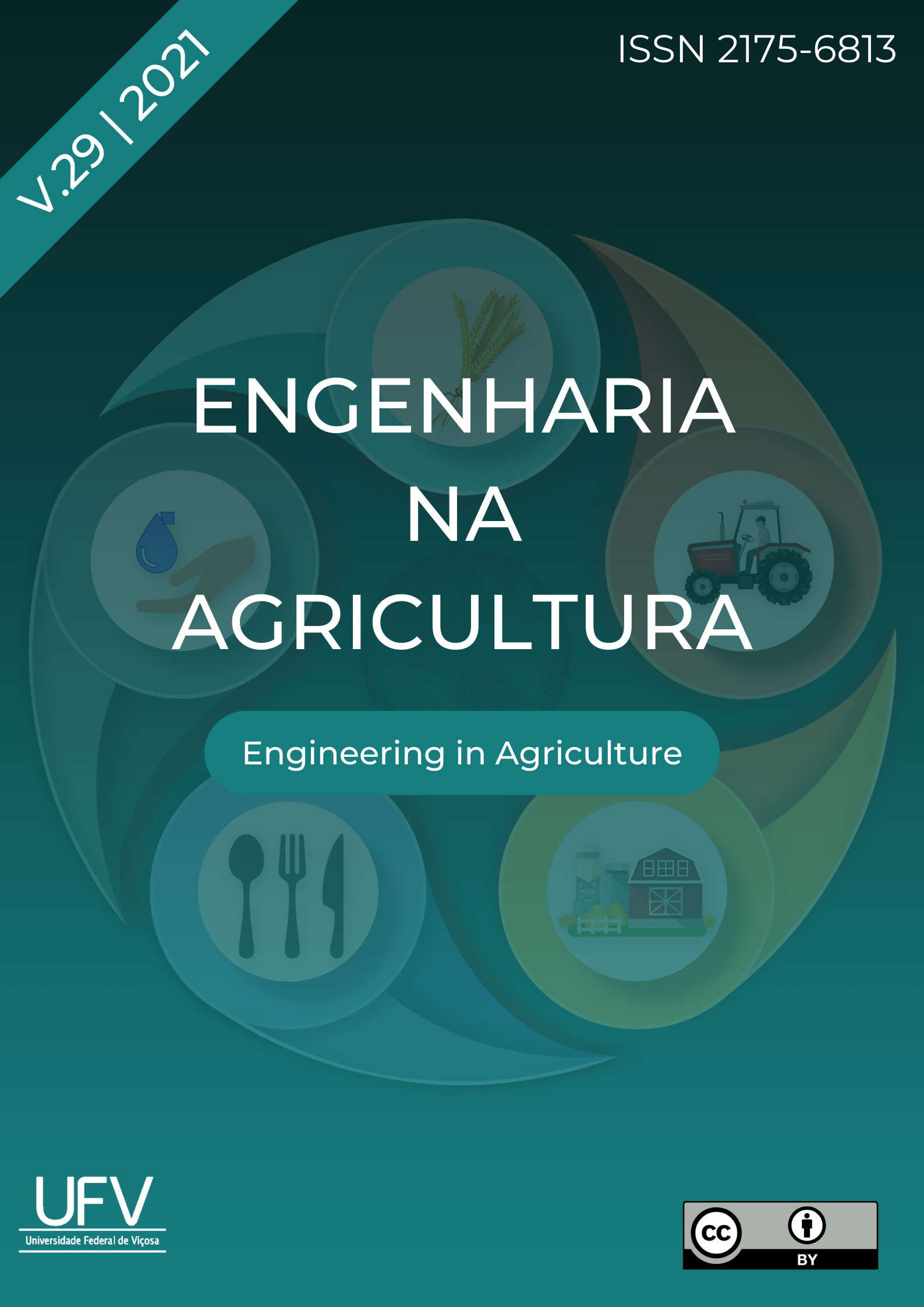Numerical simulation applied to milk cooling
DOI:
https://doi.org/10.13083/reveng.v29i1.9527Keywords:
Mathematical modelling , Finite element method , Milk cooling tankAbstract
A model is a representation of a real system that can be analysed and yield predictions under different operating conditions. The aim of this study was to model a milk cooling tank that cools milk to 4 °C to preserve its quality after milking at the farm. The model was developed and simulated using the software Ansys for finite element analysis. The results from the simulations were compared to experimental data. The model simulated milk cooling in the tank with an error lower than 2%, which is considered acceptable for numerical simulations. In other words, the model satisfactorily represents the real system. Thus, alternatives can be directly tested in the computational model to improve and optimise the milk cooling process and to better use the system without actually implementing them in the real system.
Downloads
References
ATANGANA, A.; BALENU, D. New fractional derivatives with non-local and non-singular kernel theory and application to heat transfer model. Thermal Science, v. 20, n. 2, p. 763-769, 2016.
AZO MATERIALS, Stainless Steel – Grade 304, 2001. Available at https://www.azom.com/properties.aspx?ArticleID=965. Access on May, 2019.
CHANDAN, R.C. Dairy-Based Ingredients. Chapter 1, Eagan Press, 1997.
CLÍNICA DO LEITE. Contagem Bacteriana Total. Mapa da Qualidade do
Leite, 1 ed. Piracicaba: ESALQ/USP, 2016.
EMBRAPA. Produção de leite com qualidade na propriedade rural. 2011.
MINISTÉRIO DA AGRICULTURA, PECUÁRIA E ABASTECIMENTO. Instrução Normativa Nº 62, 2011.
MINISTÉRIO DA AGRICULTURA, PECUÁRIA E ABASTECIMENTO. Projeções do Agronegócio - Brasil 2017/18 a 2027/28. Ministério da Agricultura, Pecuária e Abastecimento. Secretaria de Política Agrícola. Brasília: MAPA/ACE, 2018.
MOHAPATRA, D.; RAO, P. S. A thin layer drying model of parboiled wheat. Journal of Food Engineering, v. 66, p.513-518, 2005.
NIMDUM, P.; PATAMAPROHM, B.; RENARD, J.; VILLALONGA, S. Experimental method and numerical simulation demonstrate non-linear axial behaviour in composite filament wound pressure vessel due to thermal expansion effect. International Journal of Hydrogen Energy. v. 40, p. 13231-13241, 2015.
RAGSDALE, C. T. Modeling & Decision Analysis - Revised Edition. 1 ed. Connecticut: Cengage, 2009.
PENG, P.; SONG, H.; ZHANG, T.; ADDY, M. ZHANG, Y.; CHENG, Y.; HATZENBELLER, R. Concentrated high intensity electric field (CHIEF) system for non-thermal pasteurization of liquid foods: Modeling and simulation of fluid mechanics, electric analysis, and heat transfer. Computers and Chemical Engineering, v. 97, p. 183-193, 2017.
SHEIKHOLESLAMI, M.; GANJI, D.D. Ferrohydrodynamic and magnetohydrodynamic effects on ferrofluid flow and convective heat transfer. Energy, v. 75, p. 400-410, 2014.
SHEIKHOLESLAMI, M.; GANJI,D.D.; JAVED, M.Y.; ELLAHI, R. Effect of thermal radiation on magnetohydrodynamics nano fluid flow and heat transfer by means of two phase model. Journal of Magnetism and Magnetic Materials, v. 374, p 36-43, 2015.
ZHAO, B. Temperature-coupled field analysis of LPG tank under fire based on wavelet finite element method. Journal of Thermal Analysis and Calorimetry. v. 117, p. 413-422, 2014.
Downloads
Published
How to Cite
Issue
Section
License
Copyright (c) 2021 Revista Engenharia na Agricultura - Reveng

This work is licensed under a Creative Commons Attribution-NonCommercial 4.0 International License.
Authors who publish with this journal agree to the following terms:
The author(s) authorize(s) the publication of the text in the journal;
The author(s) ensure(s) that the contribution is original and unpublished and that it is not in the process of evaluation by another journal;
The journal is not responsible for the views, ideas and concepts presented in articles, and these are the sole responsibility of the author(s);
The publishers reserve the right to make textual adjustments and adapt texts to meet with publication standards.
From submission, the author is fully conceding the paper's patrimonial rights to the publication, but retaining the owner of its moral rights (authorship and paper's identification) according to Creative Commons Attribution-Noncommercial.








 Licensed by
Licensed by 